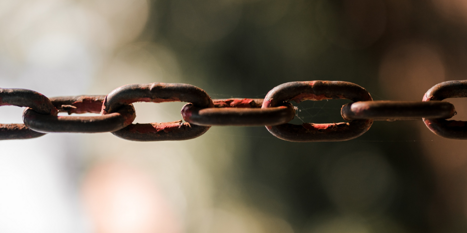Landing page optimisation for PPC campaigns

Here’s a frustrating fact for you: your PPC and SEO campaigns can only do so much for your marketing results.
True efficiency and relevance in your digital marketing campaigns comes from a partnership of your carefully planned PPC campaigns, and some curated and refined dedicated landing pages.
This article will guide you through everything you need to craft an SEO primed dedicated landing page that will elevate your PPC campaigns. We’ll also share some top tips for making the most of your landing pages so you’ll be set to take your website and PPC advertising to the next level:
- Why do your ads need a dedicated landing page?
- Focused copy
- Visuals that help conversion
- Simple styles and forms
- Fast page loading
- A/B testing
Why do your ads need a dedicated landing page?
If you understand the basics of PPC, you’ll understand why a dedicated landing page is so vital. Much like keywords for SEO and PPC, landing pages help improve your website’s relationship towards search engine algorithms. If you improve your landing pages, you’ll encourage an increase in engagement rates, often leading to a higher conversion rate in the process.
Let’s drill into some of the details that go into a useful landing page, and how you can benefit.
Maintaining relevance
Landing pages ensure alignment between your ad messaging and the customer’s expectations. If a customer is browsing for a specific product and clicks on a relevant ad, you’ll want to take them to a page that reinforces that they’ve clicked on the correct ad, and are one step closer to making their desired purchase. You’re giving the user what they want, reducing frustrations and increasing customer satisfaction.
When optimising your landing page, you’re automatically increasing your ad quality scores and reducing CPC. It’s serving both the ad, and the website overall; delivering an improved user experience interacting with your ads and site.
Capture leads efficiently
The first step in any landing page creation and optimisation is to cut out less relevant copy. This helps streamline the conversion process by eliminating distractions and guiding users towards their intended goals when browsing online.
This is where detail really comes into play. Tailor multiple individual landing pages to specific campaign goals and audience segments for optimal results.
Focused copy
At the heart of a successful landing page is engaging, relevant and actionable copy, that guides the user towards completing your desired campaign goals. Whether that’s making a purchase, signing up to a newsletter or creating an account, the copy on the page will be one of the most useful elements in this process.
Clear and concise messaging
Craft compelling headlines and subheadings that showcase the benefits of your products and services in a way that is streamlined. This keeps the focus on exactly what is important to the user.
Remember, most users on these landing pages will be navigating your site for the very first time. What seems obvious to you might not be immediately apparent to the user in your existing copy. Simplify the entire process for them; browsing your site should be a pleasure, not a task!
Use persuasive language that matches your brand’s tone of voice, so your content is immediately recognisable to any users who are already familiar with your brand. This helps build trust in your site, as well as being useful for driving conversions.
Finally, be mindful of using relevant keywords to capture attention and motivate users to continue their journey on your site. There’s no need to “keyword stuff” your copy, but make sure any product names are clearly emphasised throughout the page.
Highlight benefits
A dedicated landing page is completely focused on just one product or service. So use this opportunity to emphasise any unique selling points and key features to address user’s pain points and browsing preferences. This also helps you stand out from your competitors by highlighting everything that makes your brand unique.
It’s also a good idea to incorporate social proof, testimonials and trust signals to build credibility and instil confidence in your brand, products and services. These are just little reminders to new and returning users that your site delivers excellence that they can trust.
Visuals that help conversion
Alongside your powerful, optimised copy, you’ll want to create visuals that are engaging and efficient for users to navigate. This is both an exercise in colourful, vibrant and on-brand design choices, and the more streamlined design elements that help a user navigate your site with ease. Here’s some more detail on those two crucial areas:
High-quality imagery and media
Firstly, you want any user to immediately recognise that they are on your brand’s website. So carry your brand’s visual iconography, colour scheme and themes into your landing page design. Once you’ve established a sense of brand identity, use visually appealing images, videos and graphics to enhance engagement and reinforce the key messages and CTAs of your page.
This sounds pretty simple, but keeping your design solely focused on the product or service being advertised is a vital part of maintaining relevancy in your web page designs. If a customer is looking for a red dress, show them that item as soon as they land on the page.
Ensure all of your visuals are relevant, authentic and optimised for fast loading times across devices. You’ll want to consider the file size, resolution and aspect ratio of any graphics you use, to ensure you don’t accidentally overload your page and create slow loading speeds.
Clear and intuitive design
Much like your optimised copy, the best bespoke landing pages have clarity in mind. Simplify your layout and any required navigation to minimise friction and guide users towards conversion points. If they want to buy something, don’t make them click through and scroll for eternity to find what they are looking for.
Implement a visual hierarchy to help with navigation. Keep your page simple using whitespace at appropriate points, and add in contrast to draw attention to key elements and CTAs.
Simple styles and forms
Simplicity is key with and landing page. Here are a few final pointers on design and form creation for your site.
Minimalist design
This is far from a fad or passing trend. Minimalism is a design choice that can really help your marketing goals. Design your landing pages with clean and uncluttered layouts to reduce distractions and keep the focus on the main message and conversion goal.
Choose simple colour schemes and typography to enhance readability and maintain visual consistency. There’s no need to complicate these landing pages.
User-friendly forms
A lot of landing pages will be created because you want to include a form for a user to fill in. This could be signing up for a newsletter, joining a membership group or creating an account in association with your brand.
Minimise the number of form fields to reduce friction and improve completion rates. Users simply don’t have the time or will-power to stay on a site that makes any form completion a time consuming or challenging thing to do.
Provide clear instructions and error messages to guide users through the form submission process seamlessly.
Fast page loading
Imagine this. You’ve gone through the process of carefully writing the most engaging copy, and worked tirelessly to optimise the design of your landing pages. But when a user click through to your bespoke URL, they are met with a slow loading page. Without a second thought, they click away and head straight to the next available site.
It’s nothing personal, but unless you have a fast loading time for your dedicated landing pages, many users will never see all of your hard work. Here’s what to do to improve things:
Optimise performance
Compress any images, minify your code, and leverage caching to improve your loading speed and reduce bounce rates. If there’s an option to make something smaller or more streamlined, be it the file size of a video or the number of redirects built into your site, these will all add up to contribute to a faster loading time.
One the back-end of your website, utilise content delivery networks (CDNs) and server-side optimisations for faster response times. It’s also worth checking the use of any plugins that may be outdated or not necessary with your newly optimised site, as these can also impact loading speeds.
Mobile responsiveness
Finally, with the majority of online shoppers browsing on their mobile devices, the most highly optimised sites are built with mobile responsiveness in mind. Prioritise mobile optimisation to accommodate those users accessing landing pages on smartphones and tablets.
Ensure seamless navigation, legible text, and touch-friendly elements for an optimal mobile experience.
A/B testing
With all of these elements in place, you are fully prepared to launch your first dedicated landing pages into the wild. But this is just the first step. Over time, you need to assess what is working, and what is costing you budget and conversions.
Continuously test and improve your landing page elements, including headlines, images, CTAs and form fields. Analyse data and performance metrics to identify areas for improvement and refine strategies for maximum impact.
A great way to quickly see what users are responding to more positively is to A/B test your landing pages. Simply set up two similar ad campaigns, leading to two similar (but separate) landing pages. Change something on the second landing page to test out which version performs better over time. It could be a change in layout, a rewrite of your landing page copy or different product images.
After some time, you’ll be in a position to analyse both pages against one another. Then you can update your existing pages to reflect the design and copy choices of the most successful page. This is a process that you can repeat time and again, to consistently optimise your website’s relevance and performance.
In Summary
If you’re looking to maximise the efficiency of your next PPC campaign, or bring in even stronger results from your existing campaigns, it’s time to create some dedicated landing pages on your site. By aligning the copy and design of each landing page to your existing PPC ads, you’ll be optimising the SEO potential of your landing page, and increasing ad relevance. You’ll also benefit from an improved user experience, as your pages become even more relevant and easy to navigate.
As the digital landscape continues to evolve, mastering the art of landing page optimisation is one way to maintain the relevance of your site in relation to your ad campaigns. This relevance is at the heart of any successful marketing campaign, setting you up for future success.








